UPSC Daily Current Affairs- 9th September 2023 | Current Affairs & Hindu Analysis: Daily, Weekly & Monthly PDF Download
GS-I
Dancing Girl Statue
Subject: Art and Culture
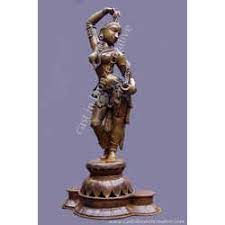
Why in News?
The Sculptures of Nataraja, Dancing Girl will be used greet delegates at Bharat Mandapam as per recent announcements.
About Dancing Girl:-
- Discovered in 1926.
- Discovered by: Ernest Mackay.
- Discovered at Mohenjodaro,
- The ‘Dancing Girl’ is a sculpture made of bronze.
- It is one of the highest achievements of the artists of
- It belongs to the Indus Valley Civilization and dates back to circa 2500 BCE.
- It is 10.5 cm in height, 5 cm in width, and 2.5 cm in depth.
- Presently, it is on display in the Indus Valley Civilization gallery in the National Museum, New Delhi.
- The statue is named the ‘Dancing Girl’ owing to her posture, with her right hand on the back of her hip and the left hand resting on her left thigh.
- Her features are prominent with large eyes, curly hair, and a flat nose.
- She appears to be adorned by a necklace alongside some bangles.
- Her hair is plaited on the back and neatly tied in a bun.
- Her arms are unnaturally long which is a common feature of the artefacts of this time.
- Her head is tilted slightly backward.
- An interesting fact to notice is that the number of bangles in her hands differs.
- She has 24 bangles in one hand and 4 in the other.
- The sculpture was made using the ‘Lost Wax’ method.
- Lost Wax’ method: molten wax is poured into a mould to create a model.
- In the 1920s Daya Ram Sahni and D. Banerji began excavating in modern-day Harappa and Mohenjodaro.
About Nataraja:-
- It is the representation of the Hindu god Shiva during his form as the cosmic dance.
- It is represented in metal or stone in many Shaivite temples, particularly in South India.
- It is an important piece of Chola sculpture.
Features of the Nataraja:-
- The upper right hand holds the drum: it signifies the sound of creation.
- All creations spring from the great sound of the
- The upper left hand holds the eternal fire: it represents the destruction. Destruction is the precursor and inevitable counterpart of creation.
- The lower right hand is raised in the gesture of Abhay Mudra signifying benediction and reassuring the devotee to not be afraid.
- The lower left hand points towards the upraised foot and indicates the path of salvation.
- Shiva is dancing on the figure of a small dwarf.
- The dwarf symbolizes ignorance and the ego of an individual.
- The matted and flowing locks of Shiva represent the flow of the river Ganges.
- This represents the fusion of male and female and is often referred to as
- A snake is wrapped around the arm of Shiva.
- The snake symbolizes the kundalini power, which resides in the human spine in the dormant stage.
Source: The Hindu
Cheriyal scroll painting
Subject: Art and Culture
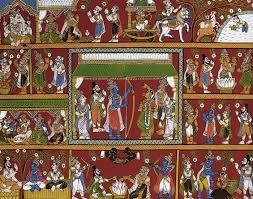
Why in News?
A Cheriyal scroll painting from Telangana, a handwoven Tussar silk stole, and a handcrafted bell metal figurine of a woman made by artisans from Chattisgarh are among the gifts that first ladies or spouses of heads of state from around the world, who will gather for the upcoming G20 Summit, will receive during their visit to the Indian Agricultural Research (IARI) at Pusa campus on Saturday, officials familiar with the matter said.
About Cheriyal scroll painting: Nakashi art
- It is a popular and modified version of Nakashi art, considered highly rich in the local motifs.
- These paintings were mostly confined to Cheriyal village, and hence called Cheriyal scrolls.
- This art form is unique to the state of Telangana and made mostly in Hyderabad currently.
- The Nakashis are the artists of Telangana and the scrolls constitute a key element of the social and cultural setting of Telangana.
- This traditional art form is considered an inseparable part of the profession comprising the story-telling and balladeer community called Kaki Padagollu.
- Themes:
- These scrolls are painted in narrative format similar to a film roll or even comic strips, and depict stories from the Indian mythology as well as the shorter stories related to the Puranas and Epics (Mahabharata, Ramayana, Shiva Puranam, Markandey Puranam)
- The Cheriyal paintings represent a distinct local invention, based mainly on local traditions.
- The ballads and folk stories of Gauda, Madiga and other communities.
- Characteristics:
- These are painted in vivid hues with mostly primary colors, showing a predominance of red color in the background.
- In this form of art, the iconography of major deities like Vishnu, Shiva, etc. too carry a strong local idiom.
- The subjects of the scroll paintings are mostly drawn from mythological, ancient literary and folk traditions.
- The main narrative involves scenes from common rural life such as women performing kitchen chores, men working in fields or experiencing merry, festival settings, etc.
- Artists have displayed these scrolls which are also accompanied by music and dance.
- The traditional scrolls are mostly of vertical format and illustrate the stories through a series of horizontal panels.
- Compared to the long scrolls in the past, now artists have adapted to paint smaller versions of these scrolls that only depict any single episode or few characters from the traditional stories.
- One of the recent innovations is the painting of single pictures instead of a continuous scroll for the purpose of wall decorations.
- This painting also received the Geographical Indication (GI) tag in the year 2007.
Source: The Hindu
GS-II
India and ASEAN Relations
Subject: International Relations
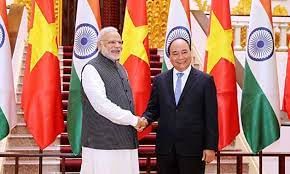
Why in News?
Recently the Prime Minister of India attended the 20th ASEAN-India Summit and the 18th East Asia Summit (EAS) in Jakarta, Indonesia.
About India and ASEAN Relations:
Political:
- India has been actively engaged with ASEAN in various regional forums and initiatives, such as the ASEAN Regional Forum (ARF), ASEAN Defence Ministers’ Meeting + (ADMM+), and the East Asia Summit (EAS).
- In recent years, they share interests in cooperation in sectors, such as trade and investment, energy, infrastructure, and people-to-people contacts.
- India’s Act East Policy, which was formally enunciated in 2014, is a key pillar of its foreign policy and is focused on expanding its engagement with ASEAN and other countries in the region.
- Mission to ASEAN 2015 with a dedicated Ambassador to strengthen engagement with ASEAN and ASEAN-centric processes
- Delhi Dialogue hosted by India annually, traditionally inaugurated jointly by India and ASEAN at the Foreign Minister’s level, serves as the main Track 1.5 mechanism for our engagement.
Trade and Investment:
- India and ASEAN have signed an FTA that has boosted trade and investment between the two.
- ASEAN is India’s 4th largest trading partner.
- Total trade stood at $110.4 billion in 2021-22.
- ASEAN-India Business Council (AIBC) was set up in 2005 with the aim of fostering closer business linkages.
- India’s export to ASEAN stands at 28% of our total exports.
- ASEAN accounting for approximately 28% of investment flows into India since 2000.
Multilateral and Bilateral Engagements:
- Bilaterally, India has signed ‘strategic partnerships’ with four ASEAN countries, namely, Indonesia, Malaysia, Singapore and Vietnam.
- At the multilateral level, India is a member of multiple ASEAN-led fora, including the East Asia Summit, the ASEAN Regional Forum, and the ASEAN Defence Ministers Meeting.
Maritime cooperation:
- India’s flagship MILAN naval exercise, started in the 1990s, includes several ASEAN members.
- India also conducts bilateral coordinated patrols with several ASEAN countries, as well as exercises such as the Singapore-India Maritime Exercise, which completed 25 years in 2018.
Socio-cultural cooperation:
- India and ASEAN have promoted cultural exchanges to enhance people-to-people ties.
- Inviting ASEAN students to India each year for the Students Exchange Programme, Special Training Course for ASEAN diplomats, Exchange of Parliamentarians, ASEAN-India Network of Think Tanks, ASEAN-India Eminent Persons Lecture Series, etc.
- India has established the ASEAN-India Centre at the Research and Information System for Developing Countries (RIS) to promote research and studies on ASEAN-India relations.
Significance of ASEAN partnership for India:
- Significant market size: ASEAN constitutes the 3rd largest market in the world.
- This can help India utilize its export potential.
- Way for countering China’s influence: Strengthening relations with ASEAN countries can serve as a counterbalance to China’s influence in the region.
- Convergence with Indo-Pacific strategy: ASEAN is a crucial component of India’s “Act East” policy and its “Indo-Pacific” strategy, reflecting the convergence of interests in the region.
- Significance of rule-based order: ASEAN plays a central role in promoting a rules-based security architecture in the Indo-Pacific region, which is essential for the region’s stability and prosperity.
- Development of North East region: Connectivity initiatives with ASEAN can boost economic development in India’s northeastern states by positioning them as a hub for regional trade and commerce.
India – ASEAN challenges:
- Slow implementation of projects: The lack of time-bound implementation of projects, such as the India-Myanmar-Thailand trilateral highway and Kaladan multimodal project, which would enhance connectivity between India and the ASEAN region.
- Trade and economic ties remain low: Despite efforts to strengthen economic ties, India’s trade and economic ties with ASEAN are much below their potential.
- But China remains the largest trading partner of the regional grouping, followed by the European Union and the United States.
- Quadrilateral Security Initiative: ASEAN has not been very favourable to the rise of QUAD as a significant security institution in the region.
- It is neither willing to be entangled in the possible power transition taking place in the Indo Pacific.
- Low FDI: India’s FDI in ASEAN is also low in comparison to China, with China’s FDI to ASEAN standing at a much higher figure.
- Territorial disputes hindering the progress: ASEAN member states are enmeshed in territorial disputes with interested powers for a long time, which creates a challenge for maintaining peaceful relations.
- Wobbling geopolitics: The geopolitical tension in the Indo-Pacific is producing geoeconomics consequences where issues of trade and technology cooperation as well as supply chain resilience are at peak.
- This is happening at a time when ASEAN remains a divided organization internally on how to manage these challenges.
- Indo-Pacific rivalry: The rivalry between major powers in the Indo-Pacific region, such as China and the United States, threatens the underlying stability on which rested the regional growth and prosperity.
Way Forward:
While the two sides have made tremendous progress in the last few decades and built strong linkages with each other, the potential for further growth and connections is immense. There is a bright future ahead for the ASEAN and India relations. As with the US and China, the ASEAN member states will need to seek to balance and pursue their interests in the developing India-China dynamic in the region.
Source: Indian Express
Amitava Roy Committee report
Subject: Polity
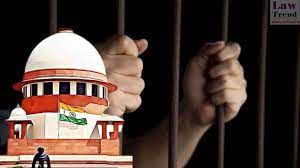
Why in News?
Recently, the Supreme Court sought the views of the Centre and the states on the Justice Amitava Roy Committee report.
Background:-
- On August 29, the Supreme Court sought the views of the Centre and the states on the Justice Amitava Roy Committee report submitted on December 27, 2022, underlining that the correctional justice system is “evidently gender exclusionary”.
About Amitava Roy Committee report:-
- Formation: 2018.
- Formed by: Supreme Court of India.
- In September 2018, the Supreme Court formed a Committee on Prison Reforms chaired by former judge, Justice Amitava Roy.
- Objective: To examine the various problems plaguing prisons in the country, from overcrowding to lack of legal advice to convicts to issues of remission and parole.
Historical Background:-
- The decision was taken based on a letter from former Chief Justice of India R.C. Lahoti highlighting the overcrowding in prisons, unnatural deaths of prisoners, gross inadequacy of staff, and the lack of trained staff.
- The court asked the committee to complete the collection of data and information and submit the report in a year.
- The committee submitted the final report in December 2022.
Functions of the committee:-
- Examine the extent of overcrowding in prisons and correctional homes & and recommend remedial measures.
- Grant of remission, parole, and furlough.
- Reasons for violence in prisons and correctional homes.
- Recommend measures to prevent unnatural deaths.
- Assess the availability of medical facilities in prisons and correctional homes.
Key Findings of the Committee:-
- Globally, one in three prisoners are undertrials.
- In India, three out of four, or about 77% of the total prison population in 2021, were undertrials.
- Undertrials: people waiting for the completion of a trial or investigation.
- Women prisoners face far worse conditions than men in terms of access to basic facilities.
- Prisons only in Goa, Delhi, and Puducherry allow female inmates to meet their children without any bars or glass separation.
- Less than 40% of prisons provide sanitary napkins to female inmates.
- Only 18% of female prisoners get exclusive women’s prison facilities.
- Prison authorities of only 13 states and two Union Territories have designated a ‘complaint officer’ to deal with complaints of violation of rights of transgender inmates in prisons.
- Majority of the states and Union Territories have not formulated welfare schemes for transgender prisoners.
- Suicide is a major cause of the 817 unnatural deaths reported in jails across the country between 2017 and 2021.
- Uttar Pradesh recorded the highest number of suicides at 101 during this period.
Key Recommendations of the Committee:-
- Speedy trials.
- Lawyer to prisoner ratio: There should be at least one lawyer for every 30 prisoners.
- Special courts should be set up to deal exclusively with petty offenses.
- Accommodative Transition: Every new prisoner should be allowed a free phone call a day to his family members to see him through his first week in jail.
- Legal aid must be provided.
- Use of video-conferencing for trial.
- Modern cooking facilities and canteens to buy essential items.
- The Supreme Court should pass directions asking authorities to start the recruitment process against permanent vacancies within three months and the process should be completed in a year.
Source: Indian Express
GS-III
Schizostachyum andamanicum
Subject: Environment and Ecology
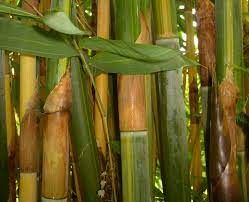
Why in News?
The bamboo species Schizostachyum andamanicum was discovered on the island about three decades ago and now its economic potential has received a boost with the patent for reusable straw and its manufacturing
About Schizostachyum andamanicum:
- It was discovered on the Andaman island about three decades ago.
- This is only found in some forested areas of Andamans.
- It grows primarily in the wet tropical biome.
- This species of bamboo is characterized by a thin large hollow erect culm (stem) with long internodes and has potential for developing into a straw.
- It has small, white flowers that are arranged in clusters. The seeds are small and black, and the seedlings have thin, light green leaves.
Key Facts about Botanical Survey of India
- It is the apex taxonomic research organization of India.
- It works under the Ministry of Environment, Forest & Climate Change, Government of India.
- It was established on 13th February 1890 under the direction of Sir George King.
- The mandate of the organization has been broadened to biosystematics research, floristic studies, documentation, databasing of National Botanical collection, digitization of herbarium specimens etc.
- Headquarter: Kolkata
Source: The Hindu
Nation First Transit Card for digital fare payments
Subject: Economics

Why in news?
State Bank of India (SBI) unveiled the ‘Nation First Transit Card’ for seamless and convenient digital fare payments.
- The card is designed to enhance the commuting experience by facilitating digital ticketing across various modes of transport and parking, all within one card.
Nation First Transit Card
- Aims to streamline customer commuting and digital fare payments for metro, buses, water ferries, and parking through a single card.
- Provides versatility by enabling retail and e-commerce payments.
- Powered by RuPay and National Common Mobility Card (NCMC) technology.
Key Facts about the National Common Mobility Card (NCMC)
- Launched on March 4, 2019.
- Enables SBI customers to use their Debit Cards as travel cards for metro rail and buses in enabled locations.
- The concept originated from the Nandan Nilekani committee, established by the Reserve Bank of India (RBI).
- An initiative by the Ministry of Housing and Urban Affairs in India, promoting cashless transactions and a unified payment platform for commuters.
- Offers a unified contactless transport solution via the RuPay platform, developed by the National Payments Corporation of India (NPCI).
- Functions as an automatic fare collection system, transforming smartphones into interoperable transport cards for metro, bus, and suburban railway services.
Source: The Hindu
UPI-ATM
Subject: Economics

Why in News?
Recently, India’s first UPI-ATM was unveiled.
Background:-
- India’s first UPI-ATM was launched recently as a White Label ATM (WLA) by Hitachi Payment Services in collaboration with the National Payments Corporation of India (NPCI) in order to enable “seamless cash withdrawals”.
- It offers an experience that allows customers of certain banks to enjoy “QR-based cashless withdrawals”.
About UPI-ATM:-
- The UPI-ATM service is also known as Interoperable Cardless Cash Withdrawal (ICCW).
- It offers a convenient way for customers of participating banks who are using UPI to withdraw cash from any ATM that supports UPI-ATM functionality, without the need for a physical card.
- India’s first UPI-ATM was launched recently as a White Label ATM (WLA) by Hitachi Payment Services in collaboration with the National Payments Corporation of India (NPCI).
Working Mechanism:-
- When a customer selects the ‘UPI cash withdrawal’ option at the ATM, they will be prompted to enter the desired withdrawal amount.
- Once the amount is entered, a unique and secure dynamic QR code will appear on the ATM screen.
- To complete the transaction and obtain cash from the ATM, the customer simply needs to scan this QR code using any UPI app and authorize the transaction with their UPI PIN on their mobile device.
Features of UPI-ATM
- Compatible with various systems.
- Transactions without the need for a physical card.
- Transaction limit of up to ₹10,000 per transaction, aligned with existing UPI daily limits and issuer bank’s UPI-ATM transaction limits.
- Allows cash withdrawals from multiple accounts via the UPI app.
Benefits:-
- It will eliminate the need to carry physical ATM cards.
- It allows users to obtain cash from multiple accounts using the UPI app.
- It will prevent issues such as card skimming.
- Card skimming: a type of financial fraud where devices are installed at ATMs or point-of-sales terminals to gather card information such as PIN and card number to siphon off cash.
Source: Hindustan Times
India’s Reforestation Legacy: A 200-Year Experiment
Subject: Environment and Ecology

Why in News?
India’s extensive history of tree planting spanning over two centuries offers valuable lessons on the consequences of various approaches to restoring forests.
Plantations in Colonial-Era India
- British Influence: From the mid-18th century, the East India Company and later, the British Crown, held sway over India’s affairs. During this period, British authorities directed their attention to India’s forests to meet their substantial timber needs for railway sleepers and shipbuilding.
- Indian Forest Act of 1865: To secure a steady supply of high-yield timber trees like teak, sal, and deodar, the British enacted the Indian Forest Act of 1865. This act placed many forests under state ownership and curtailed local communities’ rights to harvest beyond grass and bamboo, even restricting cattle grazing. In response, some Indian communities resorted to burning down forests.
- Proliferation of Teak Monocultures: Teak, well-suited to India’s hot and humid climate and prized for its durable timber, spread aggressively. This led to the transformation of pristine grasslands and open scrub forests into teak monocultures, displacing native hardwood trees like sal.
- Introduction of Exotic Trees: Exotic species like eucalyptus, pines from Europe and North America, and acacia trees from Australia were introduced for timber, fodder, and fuel. The introduction of wattle in 1861 in the Nilgiris district of the Western Ghats marked the beginning of its invasion of this ecologically significant region.
- Ecosystem Transformations: These introduced species, especially wattle and pine, began to displace native vegetation, impacting the ecology and livelihoods of local communities. The loss of native oak and sal trees, essential for various purposes, further exacerbated these challenges.
Importance of Studying Past Tree Plantation Efforts
- Regeneration Strategies: Historical strategies for natural forest regeneration have reduced carbon emissions, boosted biodiversity, and created livelihood opportunities.
- Global Tree Cover Initiatives: Past efforts also highlight the need to differentiate between reforestation for timber production and carbon offsetting. The latter often involves planting fast-growing trees to generate timber and certify carbon credits for emission offsets.
- Sustainable Practices: Planting trees on farms and barren lands to provide firewood and timber eased the pressure on natural forests and aided their recovery.
- Unintended Consequences: The introduction of exotic species without thorough research can lead to invasive species and dispossess local communities of their land and resources.
Current Restoration Efforts in India
- Indian Commitment: India has pledged to restore around 21 million hectares of forest by 2030 under the Bonn Challenge, a global initiative aiming to restore degraded and deforested landscapes.
- Focus on Single Species Plantations: To achieve the National Forest Policy target of a 33% forest cover, India has focused on planting single species like eucalyptus or bamboo, which grow quickly and increase tree cover.
Impact on People and Environment
- Concerns for Indigenous People: Afforestation in grassland ecosystems, naturally low in tree cover, may harm rural and indigenous communities. The Forest Rights Act of 2006 empowers village assemblies to manage traditional forest areas.
- Risk of Invasive Species: The continued planting of exotic trees risks the emergence of new invasive species, similar to the wattle invasion two centuries ago.
Case Studies
- Community-Led Restoration: Gram Sabhas in the Gadchiroli district of Maharashtra have restored degraded forests, managing them sustainably as a source of tendu leaves used to wrap bidis (Indian tobacco).
- Invasive Species Control: Communities in Kachchh, Gujarat, restored grasslands by removing the invasive Gando Bawal tree introduced by British foresters in the late 19th century.
Future Considerations
- Holistic Approach: Policies should encourage both natural forest regeneration and plantations for timber and fuel while assessing their impact on people and ecosystems.
- Local Implications: Assess the impact of afforestation on forest rights, local livelihoods, biodiversity, and carbon storage. Scale up successful restoration practices by communities.
- Reviving Ecosystems: Policymakers should prioritize the revival of ecosystems with a limited number of tree species, emphasizing environmental benefits over forest canopy extent.
Conclusion
- India’s historical journey in tree planting offers valuable insights into the complexities and consequences of reforestation efforts.
- By learning from the past, India can develop more sustainable and inclusive strategies for restoring its forests, addressing the needs of both the environment and its diverse communities.
Source: The Hindu
|
63 videos|5408 docs|1146 tests
|
















